Saltwater Catfish: The Worst Fish Ever OR Amazing Tarpon And Cobia Bait?
- By: Joseph Simonds
- on
- Found In: Fishing Tips, Salt Strong

Who else hates Saltwater Catfish besides me?
Here is just a short list of why I hate catching saltwater catfish (or more like why I hate it when they bite my line while I am fishing for an inshore fish like a snook, redfish, or big sea trout):
- They are slimy and nasty
- They slime up my leader and lure
- They always find a way to take my best live bait
- They make annoying grunting sounds and poop everywhere
- They have razor sharp dorsal and pectoral fins that hurt like crazy if they stick in your skin
- They always seem to take forever to get off your hook as they rarely stop wiggling, which of course cost you even more time away from pursuing the saltwater fish you were probably going after in the first place
But did you know that these notorious fish we all know as “Saltwater Catfish” can make for some of the best bait for big tarpon and cobia?
Yep.
However, before I get into the steps on how you can use these catfish for bait, let’s go over the quick difference between saltwater catfish and freshwater catfish (as there was clearly some confusion when we first came out with our now popular “No Cats On Board” shirts – see those here).

When we first took this “No Catfish On Board” shirt live way back in January, it caused a very interesting debate…
In fact, we heard either one of the following three things about this Catfish shirt design after it went live:
- “Love the shirt! Spot on. I hate catching saltwater catfish”
- “Why would you ever hate catfish. They are delicious to eat and fun to catch for the whole family”
- “Why do you hate cats?”
I think we can all agree that we’ll just eliminate the person that made the 3rd comment from this article. I can only assume it was an old lady that has never been saltwater fishing, and simply thought we were talking about her precious felines.
But what about the second comment that we received “Multiple” times? Are there that many anglers that don’t know the difference between a freshwater catfish and a saltwater catfish? Or are there just that many people that enjoy catching (and eating) saltwater catfish?
Well, after responding to most of the comments, the replies we received back proved that there is a lack of information and education on freshwater catfish vs saltwater catfish. So let’s do a quick recap on the two different types of catfish so we are all on the same page first.
Freshwater Catfish vs Saltwater Catfish
Now keep in mind that there are many different types of catfish depending on where in the world you are reading this. But for simplicity sake, I am going to compare the most common freshwater catfish vs the most common saltwater catfish found in the state of Florida and the Gulf Coast.
Fun Fact: A catfish has over 27,000 taste buds, which is more than any other animal.
Let’s go over some bullet points on the freshwater catfish first:

- First of all, you can’t get “STUNG” by a catfish. In reality, you get “finned” by their sharp dorsal fin and pectoral fins that have “barb-like” spines on them
- Secondly, Freshwater Catfish are not the same as Saltwater Catfish
- The catfish whiskers can’t hurt you at all
- Freshwater catfish are incredible to eat (try fried catfish at any local freshwater fish restaurant = good stuff)
- The most common freshwater catfish is the “Channel Cat”. It has scattered black spots closer to its tail, and the males can get quite dark during spawning season
- They are bottom feeders just like their saltwater brethren
The Slimy Saltwater Catfish “The Hardhead” Cat
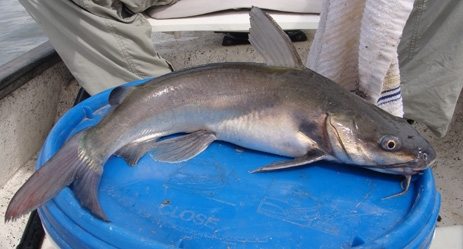
- Saltwater catfish usually fall into one of three main types of catfish
- Hardhead catfish
- Sailcats
- Gafftopsail Catfish
- Of the three catfish, only the sailcat and gafftop are the ones you hear about people eating, but even then, most anglers seem to dismiss catfish for their reputation of being slimy, having sharp fins (thus a pain to handle and clean), and because they are the ultimate bottom feeder
- They can NOT sting you either. But the smaller catfish do have razor sharp fins (dorsal and two pectoral fins) that can pierce your skin and cause some serious pain (although it’s not officially considered “poisonous”).
- These saltwater catfish also have “whiskers” known as Barbels, which the catfish uses to help it find food in grass flats and in other parts of the ocean floor
- The fins can be incredibly sharp on some of these small to medium sized saltwater catfish. I have personally seen a catfish dorsal fin go right through the thick sole of a tennis shoe without any problem (so don’t ever kick them or try standing on them to take the hook out)
How To Properly Hold A Catfish Without Getting Finned
The crew at CatfishEdge.com does an amazing job on everything catfish. Check out their short video below on how to properly hold a catfish.
This can apply to either a freshwater catfish or saltwater catfish.
Saltwater Catfish For Tarpon & Cobia Bait
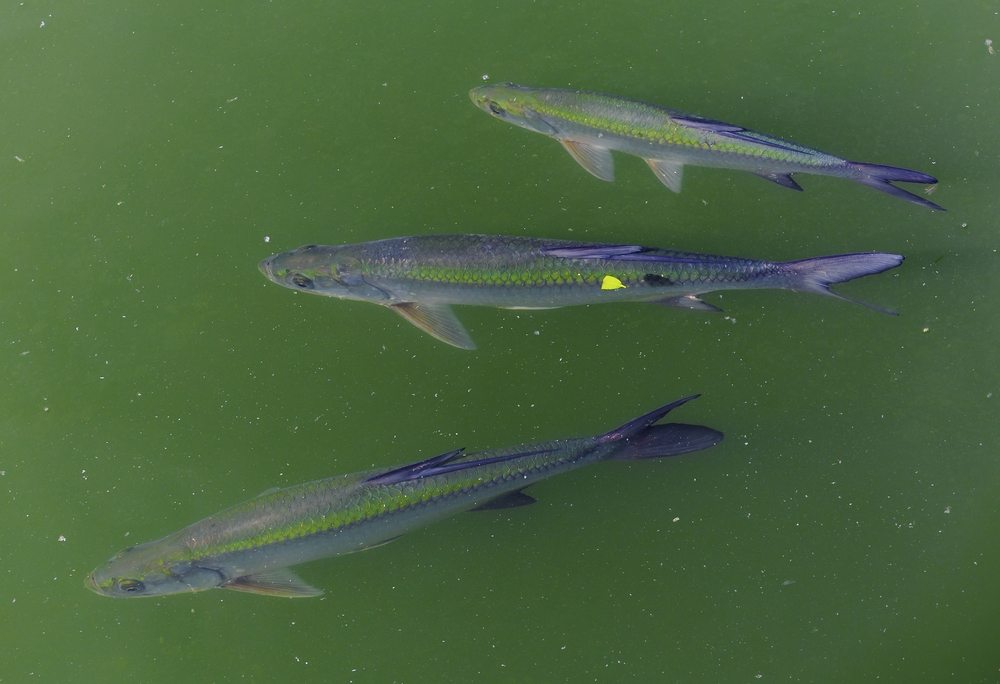
Now that we got all of that out of the way, let’s talk about how you could be putting these slimy catfish to good use… for catching some big tarpon and cobia!
To begin, if you don’t know where to catch saltwater catfish, the easiest thing to do is throw a shrimp on a jig-head and toss it near any fish cleaning table in a canal, or near any dock with a cleaning table in the Florida Intercoastal. These bottom feeding catfish can also usually be found near docks that are close to grass flats as well.
Once you have caught a few catfish, here is what you need to know in order to catch a nice cobia or tarpon with it:
Equipment Needed
- Gloves to handle the catfish
- Needlenose pliers can work great for getting the hook out of the catfish when you are catching them, and they can be used to break the spines off the fins
- However, wire cutters or very strong “fish grippers” to cut the spines off the catfish fins (you do this before throwing it back into the water as “bait”)
- Filet knife if you want to cut the catfish head off. Some anglers prefer to just fish with the catfish tail (minus spines), while others fish with the full live catfish
- You will need a heavy duty circle hook to get through these bulky catfish (all the way up to 14/0 for the real big catfish)
- Normal 60-80 lb mono leader (or whatever you would normally use for big tarpon and cobia)
- 20-30 lb braid on 7-8 ft medium heavy spinning outfits is recommended
How to hook and fish these Saltwater Catfish
There are a few different ways to fish these saltwater catfish for tarpon and cobia. Let’s cover each one briefly.
- If you end up cutting the head off and fishing just the tail, you will hook the catfish through the smaller diameter part of the tail (right near the tapered end of the tail)
- If you are fishing the full catfish (dead or alive), you can either hook it through the lips (both top and bottom), or just behind their bony head plates on top.
- If you are anchored up, some anglers like to use large bobbers or popping corks
- And if you are drifting, it is usually best to free line and let the catfish stick around the bottom
- Remember to always use your gloves when handling these slimy fish, and always cut the spines off the fins first
- Finally, get ready for some line to scream out of your reel, because it usually won’t be a small fish hitting these large catfish
Conclusion

Next time you see your rod tip bumping from an annoying catfish while fishing the flats, don’t get angry, get your live well going…
There are many of old-time fisherman that let their kids and grandkids have fun catching the slimy catfish in the morning, while they go out later and use the catfish to catch monster tarpon and cobia in the afternoon and evening (while the kids are napping from all of the fun).
It’s the ultimate win-win.
Let us know if we missed anything in regards to using saltwater catfish for bait, and don’t hesitate to leave a comment with any questions or personal fishing tips on using saltwater catfish as bait.
And if anyone has a great recipe for saltwater catfish, let us know as well.
P.S. – If you think your angler friends would like this article, please Tag them or Share it with them. You Rock! Pa-POW!
Related categories:
STOP WASTING TIME ON THE WATER!
Do what the “SMART ANGLERS” are doing and join the Insider Club.
Here’s what you’ll receive today when you join:
- Weekly fishing reports and TRENDS revealing exactly where you should fish every trip
- Weekly “spot dissection” videos that walk you through all the best spots in your area
- Exclusive fishing tips from the PROS you can’t find anywhere else
- Everything you need to start catching fish more consistently (regardless if you fish out of a boat, kayak, or land).




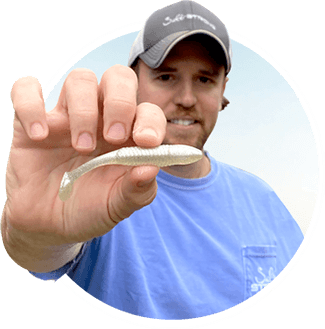
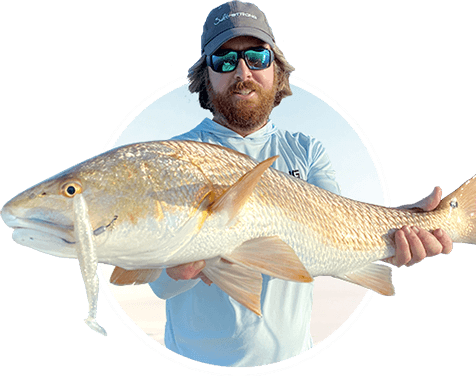
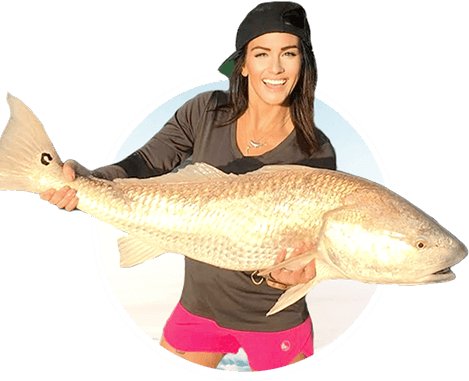
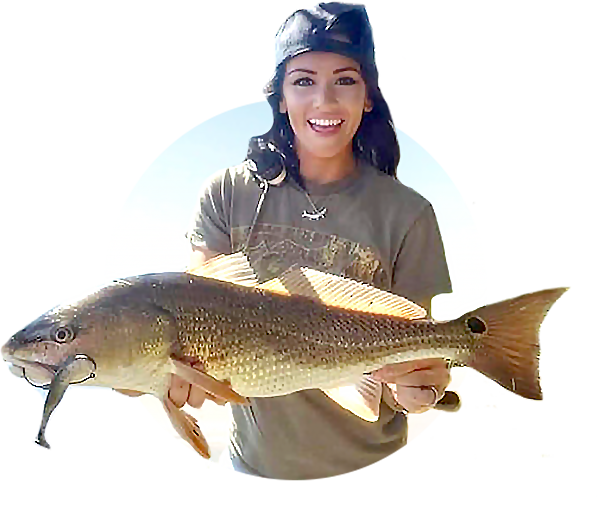
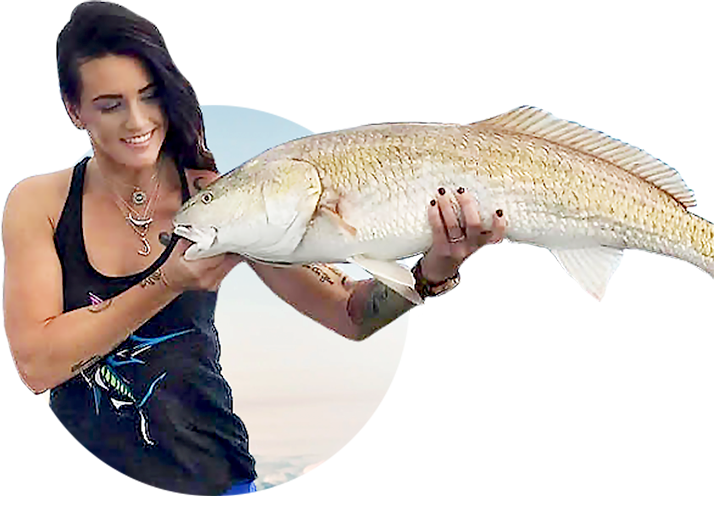

Hi guys, In SW Florida and tarpon season is about to heat up. I am new to a tarpon club and was told now is the time to stock up on catfish. Is frozen catfish a good bait for tarpon. Also should you use as cut bait on bottom or under a bobber. There seems to be different opinions on this. We had a area where we used to be able to buy mullet but it was severely damaged in the hurricane and not yet able to supply
Great tip
Bend a hanger slide it down the Bend the end of a coat hanger into a hook Slide the hook down the line to the hook in the fish hold the line and left hand and the coat hanger in the right flip the fish off the line without even touching it
I’d also like to know when the shirt will be available to purchase again. Would have made a perfect father’s day present.
Perfect timing on your question because we’re actually planning on doing a pre-order sale on these shirts soon… most likely next week. So make sure you’re subscribed to our email newsletter and keep an eye out for the notice.
I’d like to buy a saltwater catfish shirt
I am looking to get the shirt posted above, how?
Hey Janine!
We’re currently not making this design but we’re bringing it back later this year as a limited edition run (as so many anglers have asked for it). Stay tuned!
The hardhead catfish with the head and tail cut off do work pretty well for large tarpon, but have never had any luck with the sail cats. This is just my experience though. Sharks and grouper will eat the sail cats no problem but for whatever reason I’ve never caught a tarpon on sail cats. I prefer mullet chunks of the mid section, live freelined mullet, live freelined mojarra, and Spanish mackerel head halves. But the problem with these baits is that small sharks will pick them apart while, they mostly seem to leave the catfish alone.
I caught a nice Tarpon on a catfish with the head cut off in Tampa Bay.
I plan on giving this a try using the catfish head on a knocker rig. Is there a preference for species when using chunked catfish on the bottom?
This article has mistakes. Neither species of saltwater catfish are “bottom feeders”. They are “full water column” feeders and after eviserating and studying stomach contents of hundreds of both species (and this is verified by a expert with the state of Florida)–over 95% had crab chitin in their stomachs, shrimp parts were the next most commonly found part of their diet and fingerlings of other species were common. When food is scarce they will also consume seagrass. It is not unusual to catch either species on topwater plugs and as their numbers increase (man, and an occasional bull shark are their only predators and, when inshore gillnetting was banned in 1995, they got a free pass to proliferate–and they have) you will be catching a lot more of them.
They are having an impact on recreational species. They can consume a fish that is over 40% of their body length. They are now the dominate species in many areas and their population continues to increase.
It is essential that when they are caught, that they be quickly cooled. Any fish caught in 80º water on a 90º day has a very short window to be properly cooled. After 20 minutes the path to deterioration is very quick and is irreversible.
If you do not have a lot of ice, and even if you do, gutting the fish quickly will do a lot to slow down deterioration. Their strong stomach acid will cause quick spoilage.
Snipping the ends of their spines will prevent getting spiked. You would have to be Hercules to snip the spines close to the body but the ends can be snipped easily.
I use a cheap 1000 psi electric pressure washer with a 25º nozzle to wash the slime off–it is quick and very effectiw boats have a pressure washer on board so an alternative is carrying a bucket of sand and applying it to the fish and then rinsing the fish (even if it means just dipping it back in the water) will reduce sliming up your cooler. I have yet to find an alternative for slime removal–vinegar and salt didn’t work. A rag works some but if you are catching a lot of them you will need a lot of rags.
Another alternative is wrapping the fish in newspaper before putting it the cooler–the paper does absorb some of the slime.
In culinary tests both species rank at the top of the taste tests over their freshwater brethern–most of which are “bottom feeders” and, depending on where caught, can have a muddy taste. I have smoked, pickeled, poached, fried, baked, canned, blackened and used both saltwater species in many dishes. They are delicious. (I do not remove the “bloodline”–the red area on the bone side of the fillet–no one can detect whether this has been done or not). Their bones and heads (gills removed) make an outstanding fish broth
The smaller (less than 12″) “Hardheads” (Ariopsis felis) are hardly worth filleting–but gutting them, removing the heads and fins then frying or baking them (skin on) makes a delicious meal and is easy to do. With the skin on you need no breading.
If skinning them in the conventional manner dipping them for a few seconds in near boiling water seems to make the job easier.
Taking kids fishing? No species will lure a kid into enjoying fishing more than catching a catfish. They are easily caught, fight like hell (especially a larger “Sailcat”–Bagre Marinus) and seldom get off the hook. Kids are fascinated by examining the stomach contents and their experience is completed when their fish is cleaned and they get to eat what they caught.
A tip–they are strong fish and are really fiesty when you try to remove the hook. We use “snaps” –we detach and leave the hook and snell in the fish until we process the fish (or it is sedated). Most spiking injuries come from people trying to remove the hook immediately after landing the fish. This is not a process that the fish cooperate in–they really take offense and hook removal is really difficult. It is reported that when stabbed by one of the spikes putting the wound in water as hot as you can stand brings relief. (Do note that the onset of scalding starts at 120º F–so no boiling water please).
Now–go catch and enjoy the best fish you never ate!
I truly hope you are joking when you say you are baking hardheads with the skin on, and using sailcat heads for soup. PUBLIC SERVICE ANNOUNCEMENT: To anyone that read his post, do NOT do that. He is joking.
Also, I hope you are as wrong about the impending explosion of the catfish population as you are about how entertaining they are to catch.
I am most certainly not joking. Justin Timineri, Chief Chef for “Fresh From Florida” has long touted both species as being outstanding in taste–many studies came to the same conclusion.
I trust that you have not had baked hardhead catfish (skin on) or you would not be making such a comment. It is better than the small freshwater species that are cooked the same way. I also fry the small ones skin on (you do not need breading as the skin prevents the oil from getting into the flesh. I do eat the crispy skin as well.
Ditto the broth which is a staple that has long been part of various cultures for centuries. It does not taste like “supermarket sodium” but is a rich broth, full of collagen.
Re: venom on spines–many fish can cause pain and infection if your flesh is pierced by their spines. Both salwater species seem to have stronger venom (I must have a tolerance for it as the few times I have been stuck I have suffered no big reaction. I do clip the spines as soon as the fish is sedated which removes the risk of getting stuck.
I think they put up a good fight. Globing on a chunk of squid and reeling in a big ole’ sailcat is easy, lazy, fun fishing. Those suckers fight like hell. Even the hardheads do their thing.
The problem is that you can’t eat them (the idea of that blows my mind), they are slimy and flop around, which makes taking out the hook hard. I will say that while as a 10 year old I used to fillet 6 inch mangrove snappers so I could have a fish nugget… the idea of cutting off the head of a cat for bait seems sadistic. But maybe Ive gone soft in my old age…
They are primarily bottom dwelling species… I’ve caught flounder on topwater, both lures and disco shrimp. Flounder are definitely bottom dwelling fish but any fish will leave their house for food when hungry. I’ve definitely cause a significantly larger number of sail cats fishing on the bottom than mid or upper portion of the water column. Nearly never caught one top water.
As for eating them, I don’t bought it. I’ve seen people catch worm and leach infested catfish in brackish waters and literally let it sit on the pier for hours dead before taking it home and picking the parasites out and cooking it. Same people also use tiny size 6 and 8 hooks to target big fish… gut hooking them every time. Their reels were less than half capacity from all the line they lost. Rod tips broke and chain smoking cigarettes. They prefer mono because it’s cheaper. Throw beer bottles in the water but it’s okay as long as you fill it up with water first so it sinks….
We know these types of anglers. Not allowed on my boat. If I kept everything I catch, toadfish and out of slot species would fill my fridge.